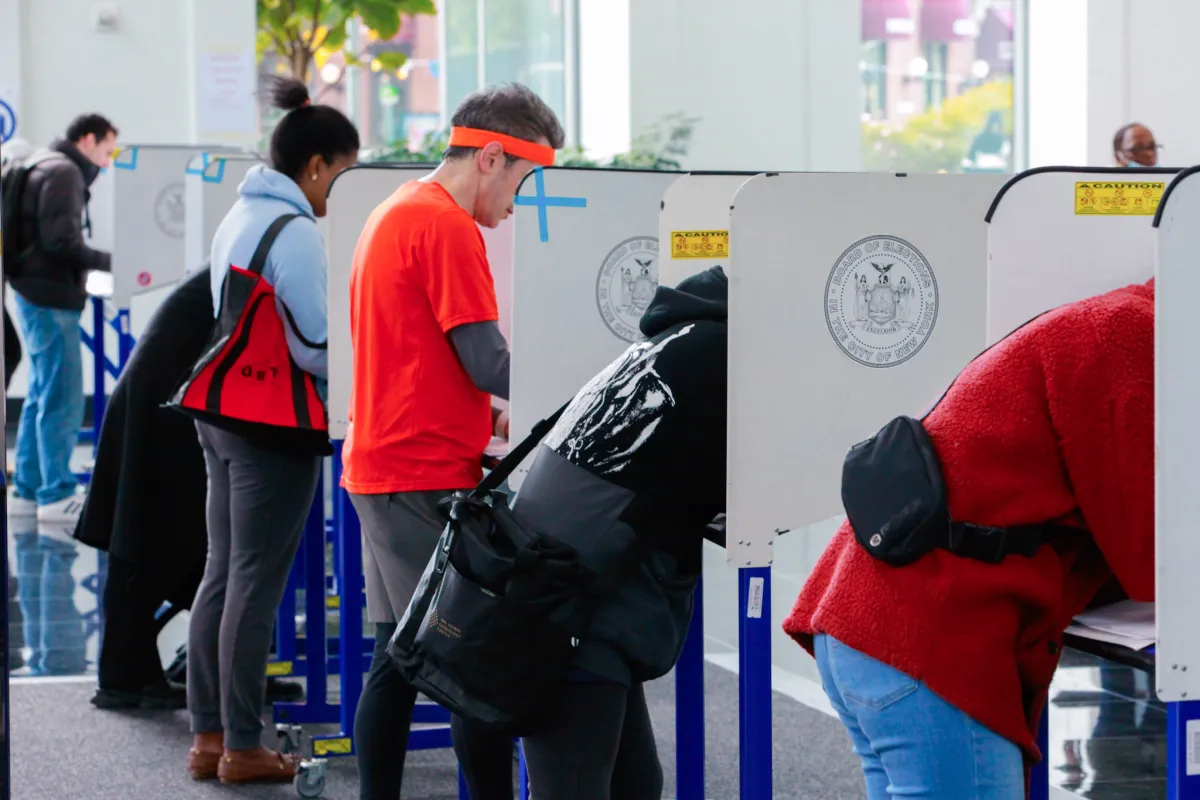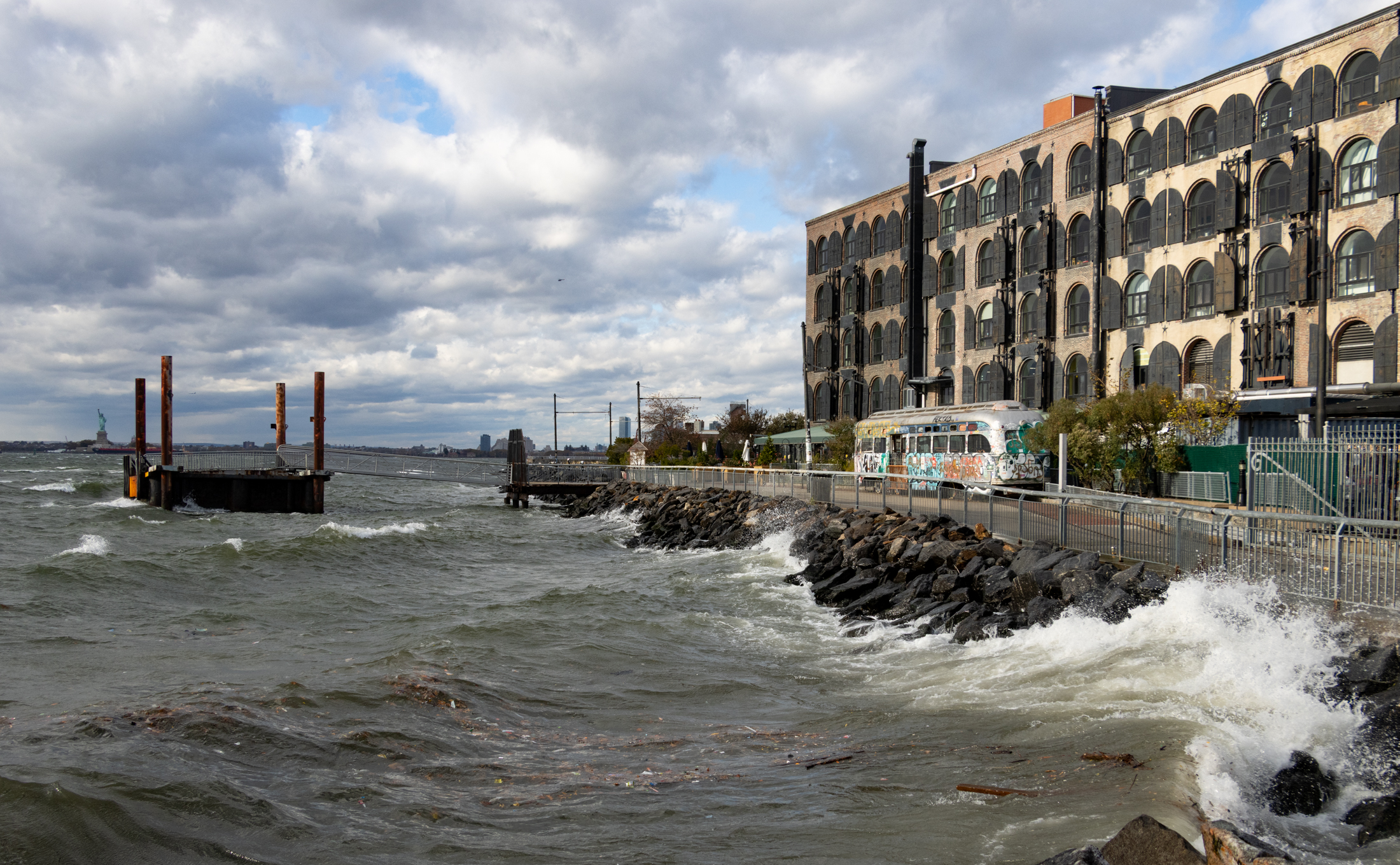Can Ditmas Park Save The Middle Class?
Despite tremendous quality-of-life gains, more residents left New York City in 2006 than in 1993. (Brooklyn was the one borough that bucked that trend.) The main reason, says an article from the American Enterprise Institute, is the the rising cost of living for middle-class families. In fact, New York now has the lowest rate of…

 Despite tremendous quality-of-life gains, more residents left New York City in 2006 than in 1993. (Brooklyn was the one borough that bucked that trend.) The main reason, says an article from the American Enterprise Institute, is the the rising cost of living for middle-class families. In fact, New York now has the lowest rate of middle-income families of any city; and, except for Los Angeles, it also has the smallest percentage of middle-income neighborhoods. One exception—and a model for the future—is Ditmas Park:
Despite tremendous quality-of-life gains, more residents left New York City in 2006 than in 1993. (Brooklyn was the one borough that bucked that trend.) The main reason, says an article from the American Enterprise Institute, is the the rising cost of living for middle-class families. In fact, New York now has the lowest rate of middle-income families of any city; and, except for Los Angeles, it also has the smallest percentage of middle-income neighborhoods. One exception—and a model for the future—is Ditmas Park:
The ‘place’ Ellen and Joe looked for was not just a physical location but something less tangible: a sense of community and a neighborhood to raise their hoped-for children. Although they considered suburban locations, as most families do, ultimately they chose the Ditmas Park neighborhood of Brooklyn, where Joe had grown up. At first, this seemed a risky choice. While Joe was growing up in the 1980s, the neighborhood—a mixture of Victorian homes and modest apartments—had become crime-infested. The old families were moving out, and newer ones were not replacing them. Yet Joe’s Mom still lived there, and they liked the idea of having grandma around for their planned-for family.
Politicians genuflect to the idea of maintaining a middle class, yet their actions suggest otherwise. In a city that has been losing middle-class families for generations, the resurgence of places like Ditmas Park represents a welcome change. In recent years, child-friendly restaurants and shops have started up along once-decayed Cortelyou Road. More important, some local elementary schools have shown marked improvement, with an increase in parental involvement and new facilities. Even in hard economic times, the area has become a beacon to New York families, as well as singles seeking a community where they will put down long-term roots. There’s an attempt in this neighborhood to break down the city feel and to see this more as a kind of a small town, notes Ellen. It may be in the city, but it’s a community unto itself, a place where you can stay and raise your children.
If cities like New York want to nurture their middle-class populations, the article suggests, they will need to shift their priorities away from “subsidizing developers for luxury mega-developments, new museums, or performing arts centers” and instead focus on “those things critical to the middle class such as maintaining relatively low density work areas and shopping streets, new schools, and parks.” In our opinion, at the end of the day, it’s all about the schools.
The Luxury City vs. the Middle Class [The American]





Sure there are families that bought when houses were cheap in DP, but many families have paid a hefty price tag for their homes in recent years. It takes deep pockets to buy a home in DP AND maintain it properly. The houses, when they sell, are generally purchased by the upper middle classes. Families that fall into the middle class bracket opt for the coops and condos. Almost all are refugees from more expensive neighborhoods.
Schools? I found this comment interesting, to say the least, “being the best school in nyc is like being a gold medalist in the special olympics. i realize there are some prestigious charter schools – and I went to college with some of those kids, and was not at all impressed as a whole.”
I sent my older child through arguably the best public elementary school in Brooklyn. She was a straight A student. I always felt she was getting a top notch academic education. We moved out of the city (not be choice), to a northern suburb with scary-expensive school taxes. My jaw dropped when my middle school daughter confessed that the work was harder here, the lessons went into greater depth, the teachers expected more, and that she in fact, had to “catch up” in certain areas… Another thing I’ve noticed is that the schools don’t spend weeks, even months, prepping for state exams. One day max.
To be honest, I wasn’t expecting the difference to be so dramatic. Truthfully, I wasn’t expecting it at all…
Bxgrl;
Oh please!!! OK, you’re right:I am a closet fascist for having written that a person who has worked themselves up the socio-economic ladder might want a better living arrangement than being next to an illegal conversion in which an 80 year old frame house has been chopped up into 5 apartments. Yes, you are also right that in my writing this, I am putting down hard-working immigrants.
I need to be shipped off to a political re-education camp.
CGfan;
I’m not discounting the possibility that some day Gravesend and other areas like it will again become middle-class. However, all I ask is that folks recognize the following:
-unlike the UWS or other “Brownstone” areas,the housing stock in areas like Gravesend is “meh”. I’m referring to the areas of the city that were developed between WWI and WWII. The housing is of a decidely lower caliber,both in terms of the aesthetics and the quality. Unlike Brownstones, these homes were built for folks of modest means.
-the trend is going the other way for these areas, at least for now. Immigrants can no longer live on the lower east side,and they are slowly getting priced out of other close-in areas like Washington Heights and Red Hook. Where to go? The areas of which I speak.
-there is a limited supply of folks who are willing to be “middle class pioneers”. The city has had a remarkable run in this sense. I too remember what the UWS was like when I was a teen (I used to hang out there a bit). Will this trend continue? I’m not so sure, given that Wall Street’s golden days are over. Hopefully it will, I’m just not so sure.
so i read the article and i’m still looking for a coherent thesis. doesn’t seem to be about saving the middle class, but about the middle class saving the “city.” author seems to be concerned about people leaving core cities for non-core cities, not about the importance that the middle class stay in “the city” as opposed to suburbs of cities. moreover, he’s really focused on the cultural consequences of the lack of diversity and the lack of families in the core city, which i get. but as far as economic consequences, is there really a difference between the middle-classer who rides in on the B train or the staten island ferry from the one who comes in on the metro north? especially if, as he suggests, the “urban neighborhoods” develop into job centers as well? they’d be that different from “true” suburbs – why? – because you’re paying NYC taxes?
and you all can debate all you like about what incomes make someone rich, but this article IS talking about lifestyle and cost-of-living, and subjective emotional lives (whether people feel the city fosters their ambitions, whether they feel part of a community or not, whether they feel they’re getting the services they deserve). seems that in the author’s view, unless you fall into the group of people he finds “constipated” (young, rich, empty-nesters), if you’re a family it doesn’t really matter whether you’re actually middle class by some absolute measure or just feel and live like you’re not one of the “constipated” classes.
benson- we are all immigrants (except for native Americans). I found your post amazingly biased and insofar as cementing over for cars- isn’t there some law that states new housing must have room for off street parking? I see it all over my neighborhood and Bed-Stuy. I’ll also point out- as a child of immigrants- that immigrants have contributed much to the economy of the city and indeed this country. I’m guessing you also find the new Berlesconi law in Italy quite attractive with its legalization of neighborhood vigilante groups and hoping we’ll pass a law like that here.
I’d also like to point out that many immigrants are working incredibly hard and making very good money for their efforts (I don’t think they came here for the cement yard.)
Benson, I know someone who bought a brownstone on the upper west side of Manhattan, 80s near CPW, in the early ’70s. Their description of the house and neighborhood at the time (dozens of people living in it, using the public hallways as toilets) is not pleasant. You seem to be denigrating any neighborhood that isn’t already gentrified and expensive as unacceptable, and yet the nicest neighborhoods now would never have become that way without lots of middle class people buying in them.
Of course you aren’t going to get the same size house as you might somewhere else in the country, but that doesn’t mean your alternative can’t be a perfectly nice place to live.
I don’t live in a million-dollar Victorian home. I live in a co-op. There are lots of apartments available in buildings such as mine (1818 Newkirk) for anywhere from $250K to $400K. Someone in my building just sold a 1000-square-foot co-op for $309K. 1825 Foster Ave is a nice building and so are the buildings on E. 18th and E. 19th, all near the Newkirk B/Q stop. Along Cortelyou you’ll find lots of co-op buildings, rental buildings, and more on Argyle and other streets with prices that are much more affordable and offer more space than in the Slope or brownstone Brooklyn.
So it is possible to find relatively inexpensive housing along a subway, near restaurants, and a short bike ride or jog to the park for New York’s “middle class,” whatever that is.
Trust me, after looking for an apartment for my wife and kid in Park Slope for years and not seeing anything big enough for the three of us, the choice to move to Ditmas Park was a no-brainer.
“Oh come ON. Here we go again. There are zillions of affordable places in New York City, from the Bronx to Queens to the upper part of Manhattan to the lower part of Manhattan to areas in Brooklyn and Staten Island that are affordable to families making $80,000 to $150,000 a year, where you will not be killed, and where the elementary schools are decent (you do have to test into a magnet school for junior high and high school)”
Mopar and all;
The fact that these areas are affordable to the middle class doesn’t make them desirable to them. I’ll use a specific area that I am very familiar with: the western part of Gravesend, where I grew up (which is is distinctly more modest than eastern Gravesend, where the Syrians live in the mega-million dollar homes).
If one were to walk down many of the streets of western Gravesend (say, around Ave.O and West 5th Street), one would find many nice, modest one-family homes that have recently been sub-divided into 3, sometimes 5 apartments that now house immigrants. As the older residents move away or die off, more and more homes are converted to such a state. When these homes are converted, the front lawn is usually paved over to make way for cars. This transformation is taking place in vast swaths of Brooklyn and Queens that you mention above.
I am not knocking immigrants, but I am saying that such an environment is NOT attractive to many middle-class folks. I travel around the country alot on business, and the point of this article is dead on: you cannot help but notice what your middle-class dollar can buy in other cities, and what it can buy here. I think most folks understand that when you move to NYC you are not going to get a suburban environment, but that doesn’t mean you have to accept living in the arrangements I just described.
> born in the BRONX, not “midtown.”
I was hoping that was a joke.
Boogie Down Kips Bay!